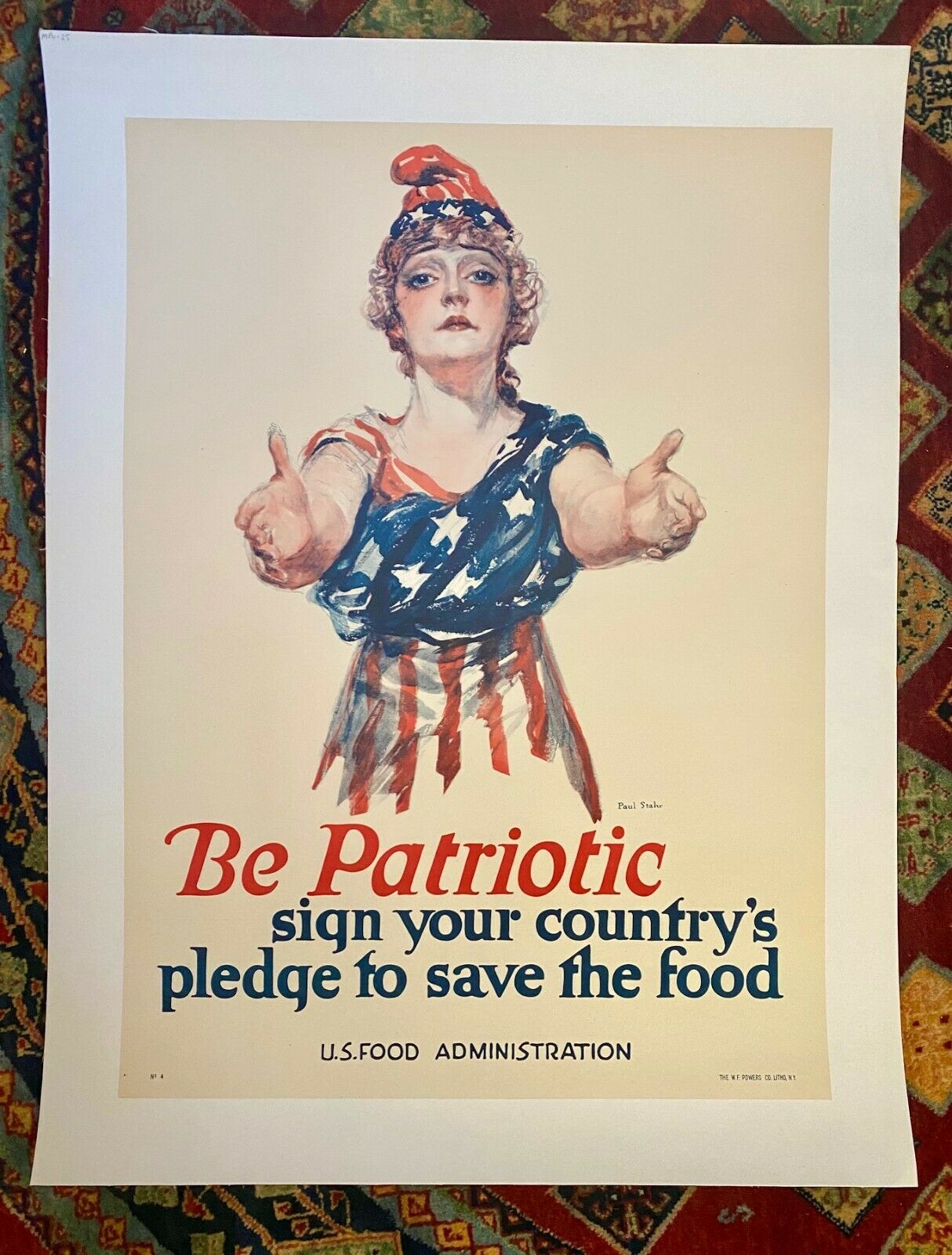-40%
Vintage WWI Poster "Be Patriotic" US Food Administration c 1918 On Linen
$ 264
- Description
- Size Guide
Description
Over the next several months I will be listing and selling my collection of vintage World War I posters. All have been carefully selected based on quality, condition and impact. All have been linen backed for conservation and preservation (a value of 0-200 depending on size). All are guaranteed original and over 100 years old.This poster Vintage WWI c 1918 measuring 20 x 30 inches. Excellent condition and linen backed. Produced in US Food Administration to encourage Americans to Save Food for the troops. Paul Stahr artist.
Description by Pritzker:
Biographical/Historical:
Paul C. Stahr was a noted illustrator who contributed to Harper's Bazaar, American Magazine, Argosy, Collier's Weekly, Woman's Home Companion and other magazines. He was born in Philadelphia in 1883, studied at the National Academy of Design, and was a student of John Ward. During World War I, he did a poster for Herbert Hoover's food campaign for the Belgians, the original of which is now in the National Archives in Washington. Stahr was a member of the Society of Illustrators, and retired in 1943. He suffered a cerebral hemorrhage and died at Long Beach, New York Hospital in 1953.
World War I began as a conflict between the Allies (France, the United Kingdom, and Russia) and the Central Powers (Germany and Austria-Hungary). The assassination of Archduke Francis Ferdinand, the heir to the throne of Austria-Hungary and his wife Sophie ignited the war in 1914. Italy joined the Allies in 1915, followed by the United States in 1917. A ceasefire was declared at 11 AM on 11 November 1918. Food shortages were widespread in Europe during the war. Even before the United States entered the war, American relief organizations were shipping food overseas. On the home front, it was hoped that Americans would adjust their eating habits in such a way as to conserve food that could then be sent abroad. Americans were told to go meatless and wheatless and to eat more corn and fish. Americans were also encouraged to plant victory gardens and to can fruits and vegetables. The poster was a major tool for broad dissemination of information during the war. Countries on both sides of the conflict distributed posters widely to garner support, urge action, and boost morale.









